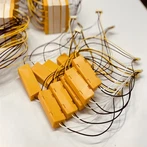The primary purpose of casing pressure testing is to verify the overall integrity of downhole tubular strings. When pressure test results fail to meet specifications, it indicates potential leakage points in the downhole string that would compromise production requirements. Such failures necessitate technical remediation measures, which involve significant investment in human resources, materials, and financial capital. Therefore, technical personnel must thoroughly understand both the analysis of failure causes and the appropriate remediation procedures.
Two-step procedure:
1. Casing head pressure test
2. Complete downhole string pressure test
Pressure Testing
The casing head pressure test, commonly known as wellhead integrity testing, evaluates the sealing capabilities of both the hanger and the head. This specific pressure test verifies wellhead seal integrity. A successful test indicates satisfactory wellhead sealing performance. In case of test failure, investigations focus on wellhead-related issues, such as improper head installation or insufficient thread engagement. These factors commonly contribute to test failures and may require complete disassembly and reinstallation. Only after achieving a successful pressure test can cement job operations proceed.
Complete String Pressure Testing
Following cement placement and after confirming acceptable cement bond quality through acoustic logging, the entire casing string undergoes pressure testing. Test specifications vary by oilfield and region. For example, in the Changqing Oilfield, standards require:
- Test pressure: 30 MPa
- Hold time: 30 minutes
- Acceptable pressure drop: ≤0.5 MPa
Common Error Analysis in Failed Pressure Tests
From a casing manufacturer's perspective, when pressure tests fail, technical service personnel must identify the root cause. However, insufficient field experience often leads to two common analytical errors:
Error 1: In a typical string configuration (float shoe + two long round thread joints + float collar + gas-tight thread casing + hanger seated in the head), there's an tendency to prematurely attribute failures to wellhead sealing issues (hanger and casing head) before thoroughly investigating leak points.
Error 2: Alternatively, failures are often incorrectly attributed to bottom hole accessories' sealing problems (float collar, float shoe, and long round thread joints) without proper verification.
Technical Remediation - Cement Squeeze Operations
Failed pressure tests constitute major quality incidents that significantly impact subsequent production operations. The most common field remediation measure is cement squeezing, preferred for its:
- Lower costs
- Mature technology
- Minimal bottomhole contamination
This systematic approach to pressure testing and remediation ensures well integrity and long-term production reliability.
Vigor will provide you with a reliable solution, Please contact us at info@vigorpetroleum.com.





